Interesting Facts About Daniel Boone You Never Knew
You might be surprised to learn that Daniel Boone's life was far more complex than his legendary frontiersman image suggests. Born to Quaker parents, Boone later owned slaves, contradicting his upbringing. He was captured by the Shawnee and adopted into their tribe, gaining valuable cultural insights. Boone's political career included roles as a surveyor, sheriff, and state legislator. His fame led to widespread myths and misrepresentations, frustrating Boone himself. While he did blaze the Wilderness Road and defend Boonesborough, many popular tales about him are exaggerated or false. Exploring Boone's true story reveals a nuanced figure shaped by the complexities of frontier America.
This post may contain affiliate links. If you make a purchase through these links, I may earn a commission at no additional cost to you. Additionally, portions of this post may be generated using artificial intelligence (AI) technology. While we strive for accuracy, please be aware that AI-generated content may not always be perfect and should be fact-checked when necessary.
The Spatula Scoops
- Boone was adopted by the Shawnee tribe during his captivity and given the name "Big Turtle."
- He surveyed over 150 land patches, contributing significantly to frontier settlement development.
- Boone owned slaves despite his Quaker upbringing, reflecting the complex social dynamics of the American frontier.
- He escaped 160 miles in just four days to warn settlers of an impending Shawnee attack.
- Boone's fame led to frustrations with media misrepresentations, highlighting the clash between history and public imagery.
Boone's Unexpected Origins
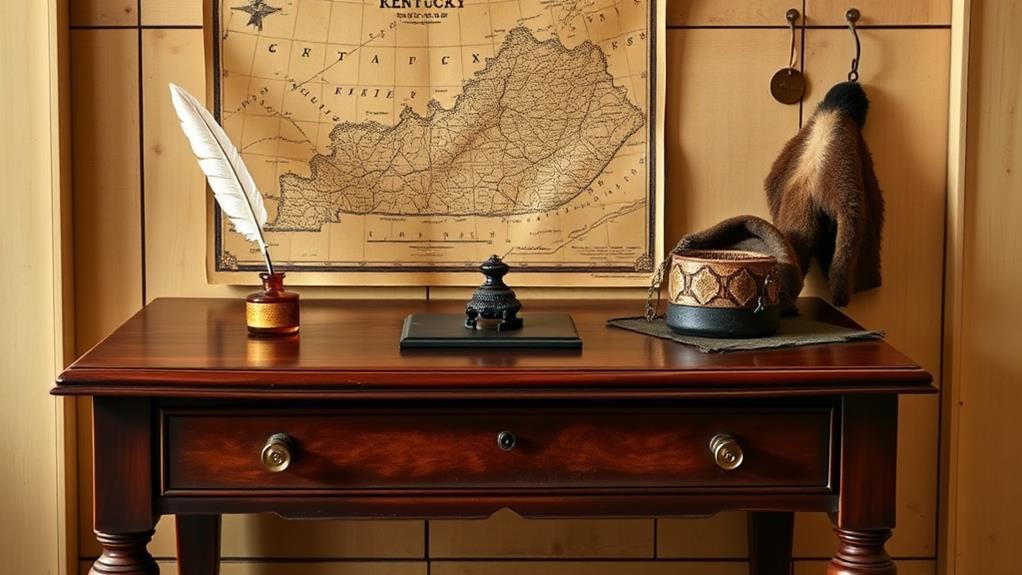
Many might assume Daniel Boone hailed from the South, but you'd be surprised to learn he was born in Pennsylvania to an English Quaker family. Daniel Boone, the iconic American frontiersman, was born on November 2, 1734, in Berks County, Pennsylvania. His upbringing was far from the rugged frontier lifestyle you might expect.
Boone's early years were spent on a family farm, where he developed skills in hunting, fishing, and trapping. This agrarian lifestyle laid the foundation for his future explorations. Despite his limited formal education, Boone's Quaker family instilled in him strong values and a sense of community.
When Boone was 15, his family moved to the Yadkin River Valley in North Carolina. This relocation marked a significant shift in his life, changing from his Quaker roots to a more frontier-oriented existence. The move also played a critical role in honing his navigation skills, which would later prove invaluable during his wilderness expeditions.
Understanding Boone's unexpected origins helps contextualize his later achievements and provides insight into the diverse influences that shaped this legendary explorer.
Military Career and Escape
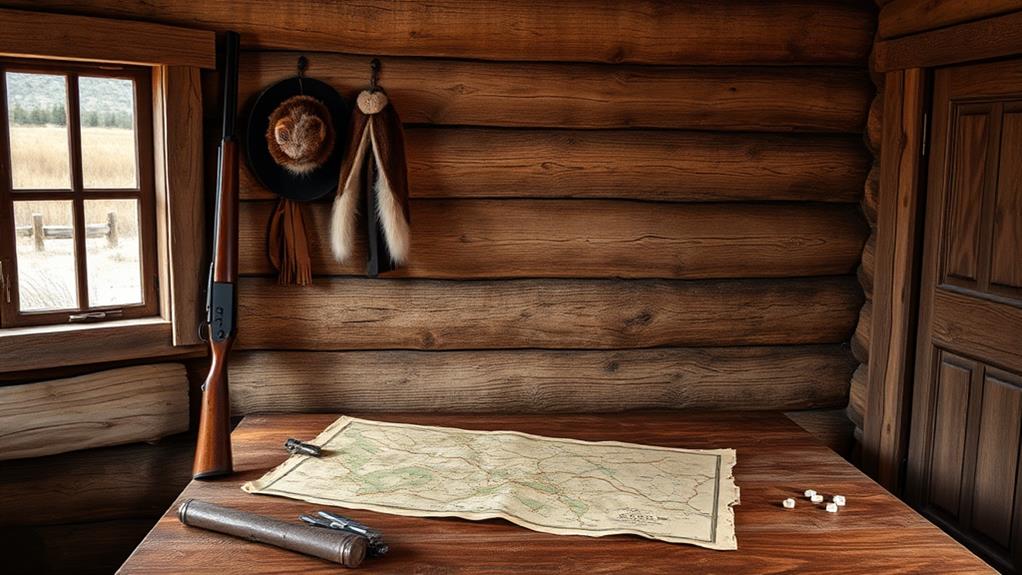
Bullets and battles marked Daniel Boone's military career, which began during the French and Indian War. You might not know that Boone served as a teamster in 1755, experiencing the harsh realities of the Battle of Monongahela. His military journey was filled with unexpected twists, including being captured by Indians and a daring escape.
| Event | Year | Outcome |
|---|---|---|
| French and Indian War | 1755 | Served as teamster |
| Captured by Shawnee | 1778 | Adopted, named Big Turtle |
| Escape from Shawnee | 1778 | 160-mile journey in 4 days |
| Siege of Boonesborough | 1778 | Successfully defended settlement |
| Court-martial | 1778 | Cleared, promoted to Major |
Boone's escape from Shawnee captivity showcased his incredible survival skills. He traveled 160 miles in just four days, warning settlers of impending attacks. During the Siege of Boonesborough, Boone's leadership proved essential in defending the settlement against Shawnee forces. Despite his heroics, he faced accusations of Loyalist sympathies after the siege. However, Boone was cleared and promoted to Major, solidifying his military career and reputation as a skilled frontiersman.
Trailblazing Kentucky's Wilderness Road
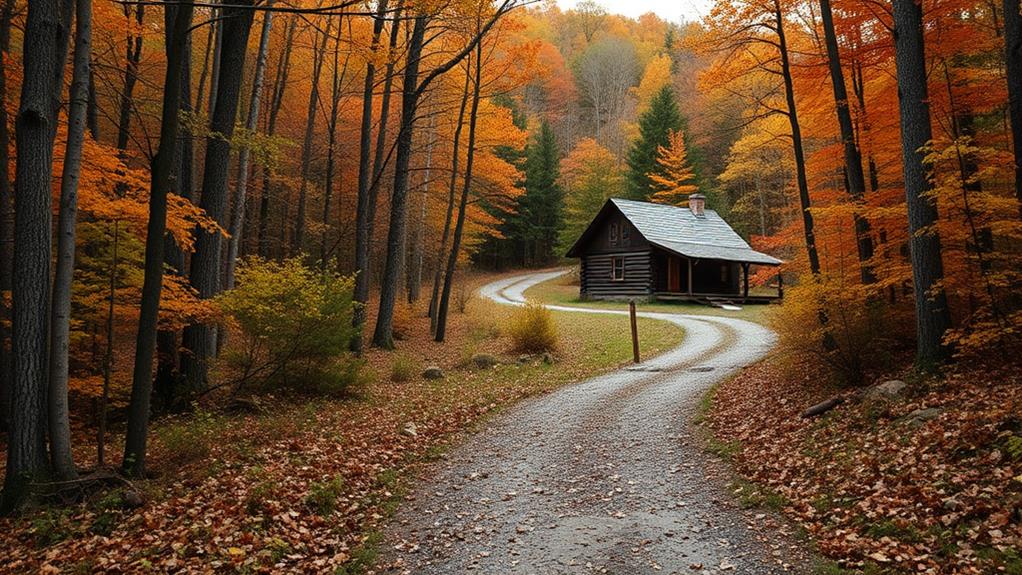
You might be surprised to learn that Daniel Boone's most significant contribution to American history was his role in creating the Wilderness Road. In 1775, he led an expedition through the Cumberland Gap, blazing a trail that would become the main route for settlers moving into Kentucky. This path, which Boone and his team carved out of the wilderness, ultimately enabled over 200,000 people to migrate westward, playing a vital role in America's expansion.
Cumberland Gap Expedition
One of Daniel Boone's most significant contributions to American frontier expansion was his leadership of the Cumberland Gap expedition in 1775. Hired by the Transylvania Company, Boone guided a crew through this natural passageway connecting the Appalachian Mountains to Kentucky's fertile lands. His successful navigation and trailblazing efforts paved the way for the construction of the Wilderness Road, an essential route for westward expansion.
You might not know that Boone's expedition:
- Enabled over 200,000 settlers to enter Kentucky
- Established new routes for migration
- Facilitated critical connections between regions
- Marked the beginning of permanent English-speaking settlements west of the Appalachians
Boone's exploration through the Cumberland Gap wasn't just about finding a path; it was about opening up a whole new world of possibilities for settlers. His work had a profound impact on migration patterns and the development of the American frontier. By leading this expedition, Boone played a pivotal role in shaping the future of Kentucky and the westward expansion of the United States.
Enabling Westward Migration
Daniel Boone's trailblazing of Kentucky's Wilderness Road was a game-changer for westward migration. In 1775, the Transylvania Company hired Boone to create a path through the Cumberland Gap, a vital passage in the Appalachian Mountains. His efforts led to the establishment of the Wilderness Road, which became the primary route for settlers moving into Kentucky.
You might be surprised to learn that Boone's exploration and geographical expertise enabled over 200,000 settlers to enter Kentucky. This massive influx of people marked a significant expansion of American frontier settlements. Boone's meticulous guidance and survival skills guaranteed the safe passage of families seeking new opportunities in the western territories.
One of Boone's most notable achievements was the founding of Boonesborough, one of the first English-speaking communities west of the Appalachians. This settlement was a direct result of his trailblazing work and became a symbol of the westward expansion. Boone's contributions to mapping and steering the Kentucky wilderness were instrumental in opening up new frontiers for American settlers, forever changing the landscape of the young nation.
Captivity Among Native Americans
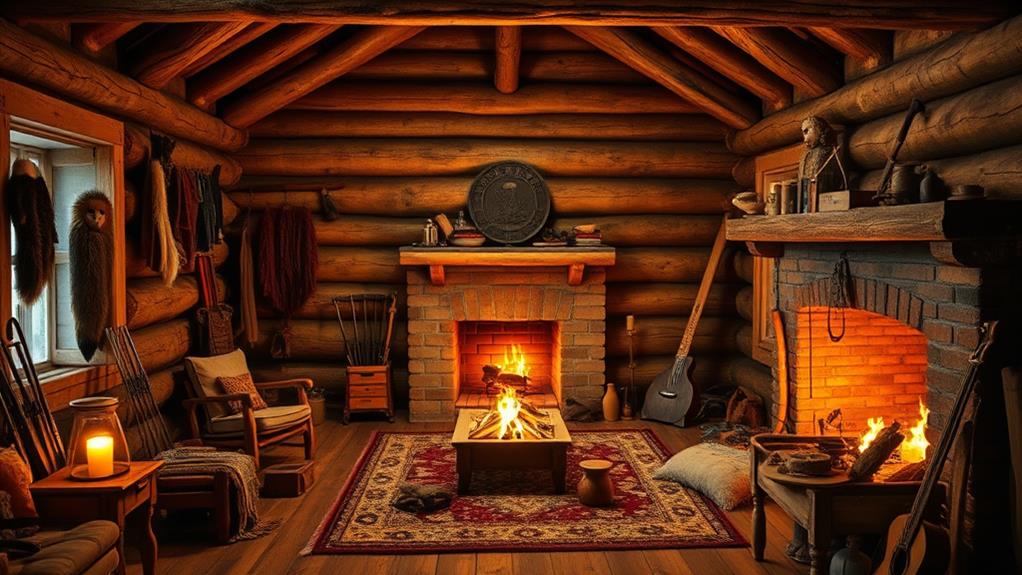
You'll find Daniel Boone's captivity among Native Americans a fascinating chapter in his life. In 1778, he was captured by the Shawnee and adopted into their tribe, an experience that profoundly shaped his understanding of Native American culture. Boone's dramatic escape and 160-mile journey back to Boonesborough to warn of an impending attack showcases his resourcefulness and loyalty to his fellow settlers.
Shawnee Adoption Experience
Facing capture by the Shawnee in February 1778, Daniel Boone's life took an unexpected turn. During his captivity, Boone experienced an unusual adoption into the tribe, receiving the name Sheltowee, meaning Big Turtle. This experience contrasted sharply with his previous conflicts with Native American tribes.
Boone's time with the Shawnee was marked by:
- Positive treatment and affection from tribe members
- Negotiation with Chief Blackfish for captives' safety
- Learning about Shawnee culture and customs
- Gaining valuable intelligence about an impending attack
Despite the favorable treatment, Boone's loyalty to Boonesborough prevailed. After four months, he made a dramatic escape to warn his settlement of the imminent Shawnee attack. His return played a vital role in the settlement's defense during a 10-day siege, showcasing his remarkable survival skills and resourcefulness.
This captivity experience highlights Boone's adaptability and diplomatic abilities. It also demonstrates how his understanding of Native American culture, gained through this unique adoption, ultimately contributed to the successful defense of Boonesborough and solidified his reputation as a skilled frontiersman.
Escape and Dramatic Return
While Boone's adoption into the Shawnee tribe was remarkable, his escape and return to Boonesborough proved even more extraordinary. After being captured by the Shawnee in February 1778, Boone spent several months living among them. During this time, he pleaded for the safety of his community, promising their peaceful surrender if spared.
In June 1778, Boone escaped from the Shawnee, showcasing his extraordinary endurance and navigation skills. He successfully traveled 160 miles back to Boonesborough in just four days, a feat that would challenge even the most skilled frontiersman. Boone's timing couldn't have been more critical, as he returned just in time to warn the settlers about a planned Shawnee attack.
His dramatic escape and return set the stage for the defense of Boonesborough during a 10-day siege. This event solidified Boone's reputation as a capable leader and frontiersman. You might wonder how he managed such a daring escape and journey. It was a combination of his intimate knowledge of the wilderness, physical stamina, and unwavering determination to protect his community that enabled this remarkable feat.
Cultural Impact on Boone
How did Daniel Boone's captivity among the Shawnee shape his perspective and cultural legacy? When the Shawnee captured Boone in 1778, they adopted him into the tribe, naming him "Big Turtle." This experience had a profound impact on Boone's understanding of Native American culture and the complex relationship between settlers and indigenous peoples.
During his time with the Shawnee, Boone:
- Gained the affection of his adoptive family
- Explored the area, expanding his knowledge of the far west
- Learned about Shawnee customs and way of life
- Developed a nuanced view of Native American culture
Boone's captivity and rescue became the stuff of legend, influencing writers like James Fenimore Cooper and shaping American frontier mythology. His experiences contributed to cultural narratives surrounding frontier life, offering a more complex portrayal of Native American-settler relations.
Even after his dramatic escape, Boone's time with the Shawnee continued to inform his perspectives. This cultural exchange likely affected his interactions with Native Americans in later years, including during his travels with Sarah, his wife, further west.
Political Roles and Surveying

Throughout his life, Daniel Boone took on various political positions that showcased his leadership skills and community involvement. You might be surprised to learn that he served as Deputy Surveyor, Sheriff, and Lieutenant Colonel. These roles allowed him to contribute to local governance and shape the development of new settlements, particularly in Kentucky.
Boone's political career extended to legislative matters as well. He was elected three times to the Virginia General Assembly and also served as Justice of the Peace in Femm Osage. These positions gave him a platform to address land claims and negotiate land rights, which were vital issues during the expansion period following the American Revolution.
As a surveyor in the 1780s, Boone explored over 150 patches of land. However, his surveying expertise had limitations, as many of the maps he produced were noted to be inaccurate. Despite this, his work in land surveying played a significant role in establishing new settlements and managing disputes related to expansion. Boone's political and surveying roles often intersected, allowing him to navigate the complex landscape of frontier development and land negotiation.
Slavery and Historical Context
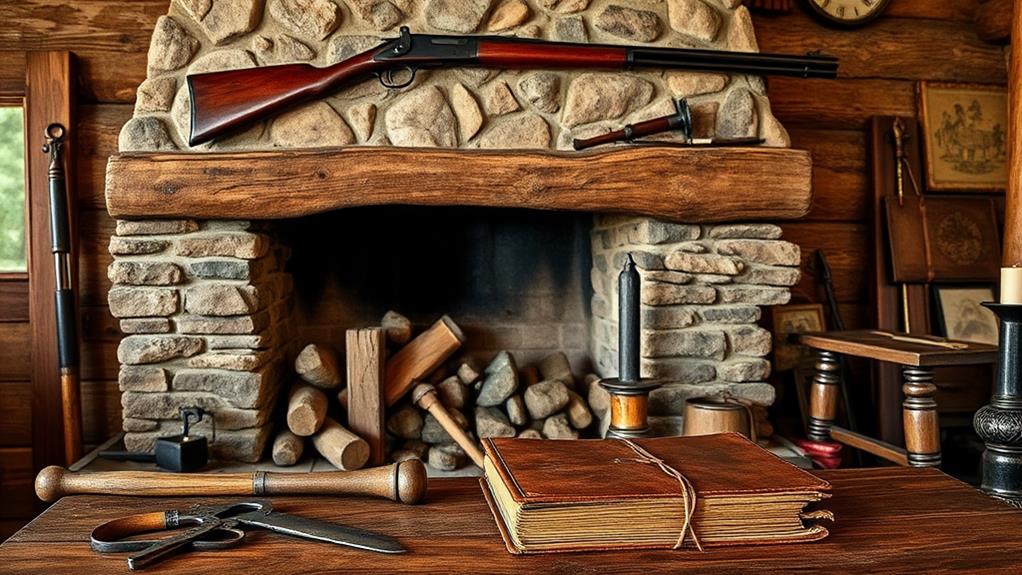
Daniel Boone's life wasn't just about exploring and surveying; it also reflected the complex racial dynamics of his time. Despite his Quaker upbringing with anti-slavery principles, Boone owned seven slaves in the 1780s, illustrating the contradiction between his beliefs and practices. This aspect of his life reveals the intricate historical context of slavery on the American frontier.
Boone's involvement with slavery extended to various aspects of his life:
- Enslaved individuals played essential roles in defending Fort Boonesborough during attacks
- Boone had a close relationship with an ex-slave named Pompey, who assisted him throughout his life
- His tavern operations relied on enslaved workers for economic activities
- The presence of slavery in Boone's life mirrored the broader frontier society
You might be surprised to learn that enslaved people contributed greatly to frontier life, even in defensive roles. Boone's relationship with Pompey highlights the intertwined lives of free and enslaved individuals during that era. These facts demonstrate how slavery was deeply ingrained in the economic and social fabric of the American frontier, even among those with anti-slavery backgrounds.
Did Daniel Boone’s Interactions with the Cherokee Influence His Legacy?
Daniel Boone’s interactions with the Cherokee significantly shaped his legacy, highlighting his understanding of their traditions and land knowledge. Immersing himself in cherokee culture interesting facts, Boone navigated the frontier with insights gained from these exchanges, which played a pivotal role in his reputation as a skilled woodsman and pioneer.
Fame, Myths, and Misrepresentations
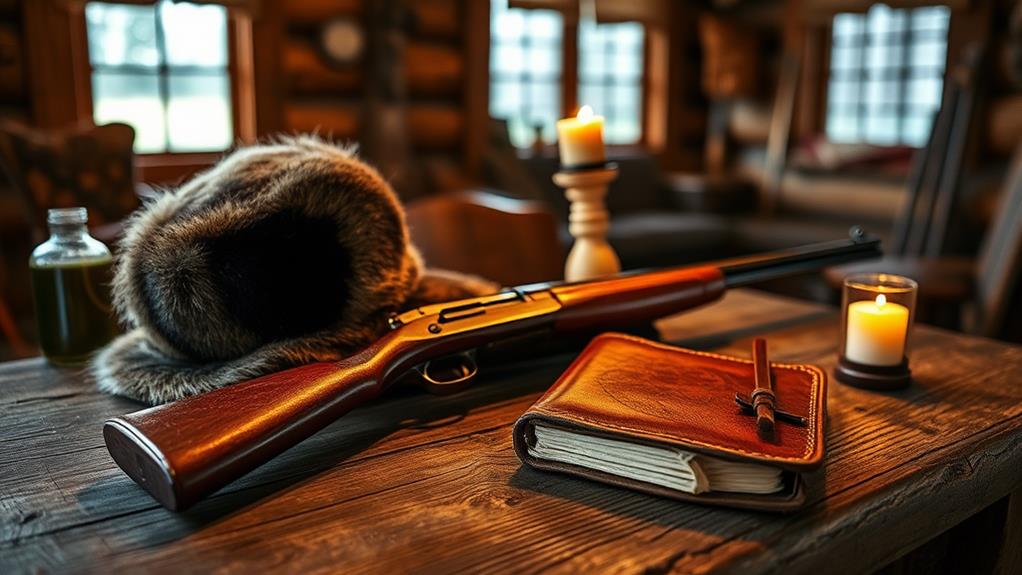
Much of what you think you know about Daniel Boone might be a myth. His fame skyrocketed after John Filson's 1784 book, which romanticized Boone's adventures and veered from historical accuracy. This publication set the stage for numerous misrepresentations that have shaped public perception of the frontiersman for centuries.
You've probably seen images of Boone wearing a coonskin cap, but that's not true to his actual style. His son Nathan confirmed that Boone preferred flat, broad-brimmed hats. This is just one example of how artistic liberties have distorted Boone's legacy. Even the theme song associated with him may perpetuate inaccuracies.
Boone himself was frustrated by the exaggerated tales surrounding his life. He felt these myths portrayed him as more than an ordinary man, which conflicted with his self-image. Media portrayals have further blurred the line between fact and fiction, making it challenging for you to distinguish truth from embellishment. As you explore Boone's story, it's essential to approach sources critically and seek out verified historical information to understand the real man behind the legend.
Frequently Asked Questions
Did Daniel Boone Have a Sidekick?
While you might picture Daniel Boone as a lone wolf howling in the wilderness, he wasn't a solitary explorer. John Finley, often considered Boone's sidekick, played an essential role in his Kentucky explorations. You'll find that Boone's adventures were marked by collaboration. He worked with various companions, including Finley and Richard Henderson, who aided in steering frontier challenges. This partnership model exemplifies the communal nature of frontier exploration, where teamwork was often key to survival and success.
Why Did Daniel Boone Wear a Coonskin Cap?
You might be surprised to learn that Daniel Boone didn't actually wear a coonskin cap. This is a common misconception stemming from inaccurate media portrayals. In reality, Boone preferred flat, broad-brimmed hats, as confirmed by his son Nathan. The coonskin cap became associated with Boone through popular culture, but it wasn't his choice of headwear. Boone actively avoided this stereotype, as he disliked the image of frontiersmen as unkempt. This myth highlights how historical facts can often be distorted in cultural representations.
Did Daniel Boone Fight at the Alamo?
No, Daniel Boone didn't fight at the Alamo. You might be surprised to learn that he died in 1820, a full 16 years before the Battle of the Alamo took place in 1836. Boone's adventures were primarily in Kentucky and the American frontier, not in Texas. While he's a famous figure in American history, his story had already concluded long before the events at the Alamo unfolded. Boone's legacy is tied to earlier periods of American expansion and exploration.
How Tall Was Daniel Boone?
Daniel Boone's height was recorded at about 5 feet 8 inches, which was slightly above average for men in the 18th century. You might've heard him described as a "big man," but this likely refers more to his larger-than-life persona than his physical stature. Historical accounts vary, contributing to the myths surrounding Boone. Despite being of average height, his skills as a frontiersman and his legendary status overshadowed any focus on his physical size.





